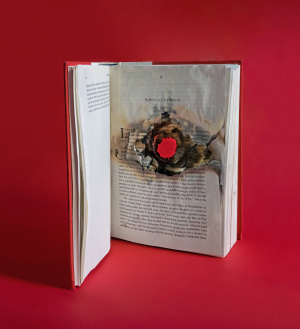Rick Perlstein in The New York Times:
 Until Nov. 8, 2016, historians of American politics shared a rough consensus about the rise of modern American conservatism. It told a respectable tale. By the end of World War II, the story goes, conservatives had become a scattered and obscure remnant, vanquished by the New Deal and the apparent reality that, as the critic Lionel Trilling wrote in 1950, liberalism was “not only the dominant but even the sole intellectual tradition.” Year Zero was 1955, when William F. Buckley Jr. started National Review, the small-circulation magazine whose aim, Buckley explained, was to “articulate a position on world affairs which a conservative candidate can adhere to without fear of intellectual embarrassment or political surrealism.” Buckley excommunicated the John Birch Society, anti-Semites and supporters of the hyperindividualist Ayn Rand, and his cohort fused the diverse schools of conservative thinking — traditionalist philosophers, militant anti-Communists, libertarian economists — into a coherent ideology, one that eventually came to dominate American politics.
Until Nov. 8, 2016, historians of American politics shared a rough consensus about the rise of modern American conservatism. It told a respectable tale. By the end of World War II, the story goes, conservatives had become a scattered and obscure remnant, vanquished by the New Deal and the apparent reality that, as the critic Lionel Trilling wrote in 1950, liberalism was “not only the dominant but even the sole intellectual tradition.” Year Zero was 1955, when William F. Buckley Jr. started National Review, the small-circulation magazine whose aim, Buckley explained, was to “articulate a position on world affairs which a conservative candidate can adhere to without fear of intellectual embarrassment or political surrealism.” Buckley excommunicated the John Birch Society, anti-Semites and supporters of the hyperindividualist Ayn Rand, and his cohort fused the diverse schools of conservative thinking — traditionalist philosophers, militant anti-Communists, libertarian economists — into a coherent ideology, one that eventually came to dominate American politics.
I was one of the historians who helped forge this narrative. My first book, “Before the Storm,” was about the rise of Senator Barry Goldwater, the uncompromising National Review favorite whose refusal to exploit the violent backlash against civil rights, and whose bracingly idealistic devotion to the Constitution as he understood it — he called for Social Security to be made “voluntary” — led to his crushing defeat in the 1964 presidential election. Goldwater’s loss, far from dooming the American right, inspired a new generation of conservative activists to redouble their efforts, paving the way for the Reagan revolution. Educated whites in the prosperous metropolises of the New South sublimated the frenetic, violent anxieties that once marked race relations in their region into more palatable policy concerns about “stable housing values” and “quality local education,” backfooting liberals and transforming conservatives into mainstream champions of a set of positions with enormous appeal to the white American middle class.
These were the factors, many historians concluded, that made America a “center right” nation. For better or for worse, politicians seeking to lead either party faced a new reality. Democrats had to honor the public’s distrust of activist government (as Bill Clinton did with his call for the “end of welfare as we know it”). Republicans, for their part, had to play the Buckley role of denouncing the political surrealism of the paranoid fringe (Mitt Romney’s furious backpedaling after joking, “No one’s ever asked to see my birth certificate”). People are essentially selfish, and more so when they feel threatened economically or socially. Johnson's famous remark upon signing the…A Trump vote gave the finger to our political elites, and his policies are still giving them the finger. They are not running the store any…
It's possible to infer from this article that the author believes that the liberal or progressive electorate is qualitatively different from…Then the nation’s pre-eminent birther ran for president. Trump’s campaign was surreal and an intellectual embarrassment, and political experts of all stripes told us he could never become president. That wasn’t how the story was supposed to end. National Review devoted an issue to writing Trump out of the conservative movement; an editor there, Jonah Goldberg, even became a leader of the “Never Trump” crusade. But Trump won — and conservative intellectuals quickly embraced a man who exploited the same brutish energies that Buckley had supposedly banished, with Goldberg explaining simply that Never Trump “was about the G.O.P. primary and the general election, not the presidency.”
More here.
The white bearded Reverend Good, who's been visiting this region since 2005, later told me it was a "wonderful day".
